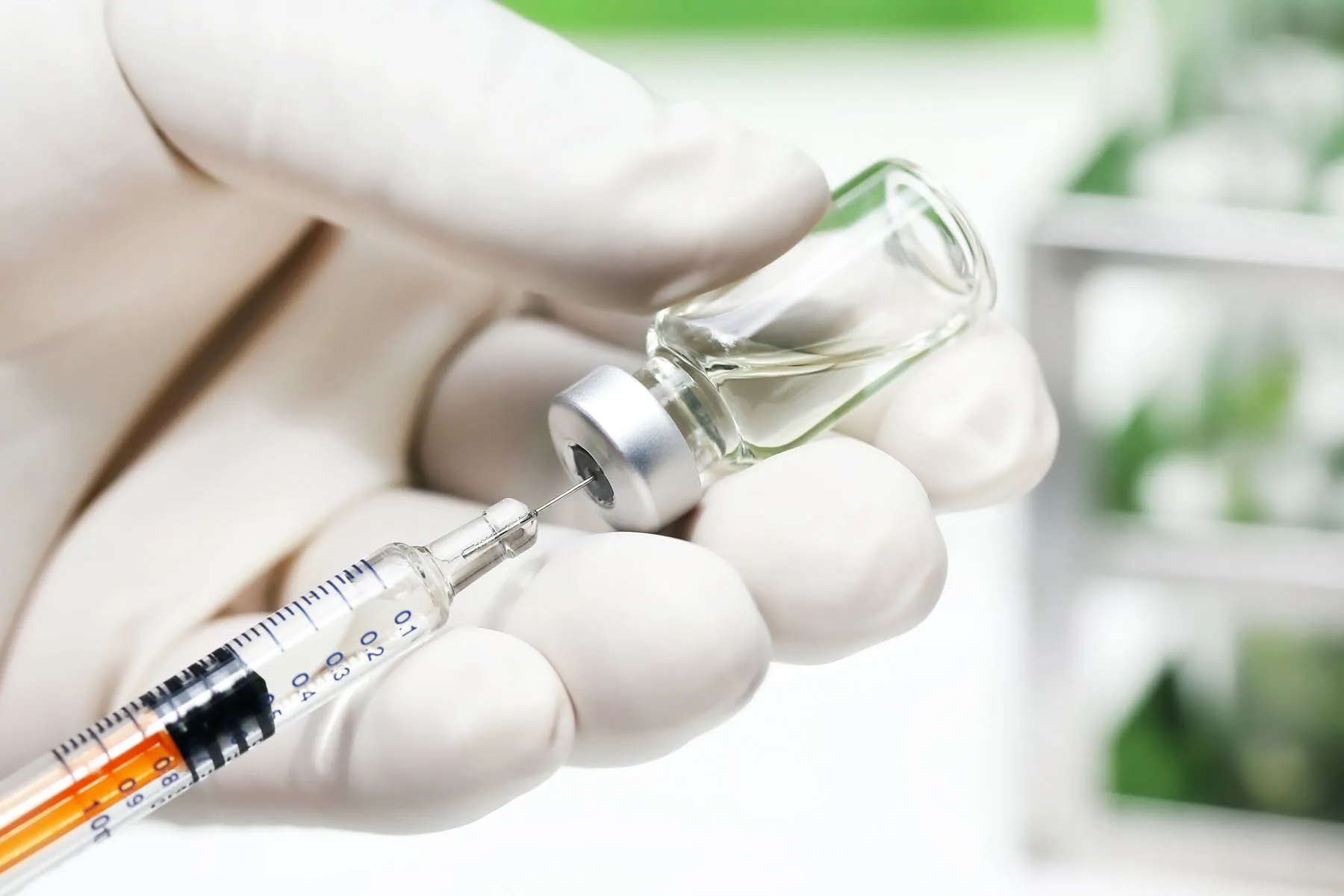Dec. 2, 2021 — The parasite that causes malaria can kill an individual inside 24 hours of signs showing. Sufferers’ signs are flu-like, together with a fever, headache, and chills. All of it begins with a microscopic poke.
When a malaria-infected mosquito plunges her needle-like mouth by means of human pores and skin, she releases immature types of the parasites, referred to as sporozoites, into the particular person’s bloodstream. From there, they journey to the liver, then to pink blood cells. The contaminated cells burst, releasing tens of millions of daughter parasites referred to as merozoites, which infect different pink blood cells. The cycle persists till the parasites are killed — and that’s turning into more durable to do.
Throughout the first 15 years of this century, worldwide efforts to curb malaria reduce instances by 40%, and deaths fell by greater than 60%. However in 2015, that progress plateaued. Since then, malaria has been quietly rising after instances had been falling steadily for over a decade.
Scientists know the parasites that trigger malaria have developed to withstand medicine for so long as we’ve had them. These mutations have traditionally popped up first in Southeast Asia’s Larger Mekong Delta, after which unfold to Africa, elsewhere in Asia, and South America from there — however this time it’s totally different.
In late 2019, scientists in Rwanda announced that they had purpose to imagine F. plasmodium — by far the most typical of the 5 malaria parasites, and probably the most lethal — alongside the nation’s northern border with Uganda was mutating to withstand artemisinin, considered one of two associate medicine utilized in mixture to deal with malaria. Such evasion places stress on the opposite drug to eradicate the parasites by itself.
“When you lose the associate drug, then you definitely get remedy failure,” says David A. Fidock, PhD, a professor of microbiology and immunology at Columbia College in New York Metropolis.
In October of this yr, the World Well being Group endorsed the first-ever malaria vaccine, the protein-based RTS,S/AS01. The four-dose vaccine, superior by landmark COVID-19 prevention efforts, is a serious milestone that scientists have painstakingly labored towards for many years.
However consultants say the vaccine alone isn’t but sufficient to cease malaria infections.
“The vaccine can regain the momentum in decreasing illness, but it surely can not change medicine, it’s not efficient sufficient,” Fidock says.
First Vaccine
The truth that malaria is attributable to parasites, fairly than micro organism or a virus, is on the crux of why it’s been so tough to develop a vaccine in opposition to it.
The P. falciparum parasite has roughly 5,300 genes “that it will probably use to evade something the host can throw at it,” says Dyann Wirth, PhD, a professor of immunology and infectious illnesses on the Harvard T.H. Chan College of Public Well being.
For comparability, the most important viruses have around 200. SARS-CoV-2, the virus that causes COVID-19, has just 11.
The brand new malaria vaccine will probably be simplest when it’s used together with current prevention strategies, together with mattress nets, chemical pesticides, and the frontline artemisinin-combination remedy, or ACT. The specter of resistance stays.
“Simply because the virus that causes COVID has mutated, the parasites do the identical. They’re dwelling parts that additionally wish to survive, and the one option to survive is to mutate,” says Pascal Ringwald, MD, who leads the World Well being Group World Malaria Program’s Drug Resistance and Containment Unit.
Parasites additionally must be focused throughout a number of phases of their life cycle, which includes two hosts: the mosquito and the contaminated human. Attacking at totally different phases of their life cycle seems key for efficient vaccine therapies.
“You can not rely on one vaccine, however you should use a number of vaccines to focus on totally different life phases of the parasite. So when you have a parasite that’s proof against a vaccine in a single stage, you possibly can goal it at one other stage,” says Solomon Conteh, a molecular virologist with the Nationwide Institute of Allergy and Infectious Illnesses. “The RTS,S vaccine targets parasites earlier than they’ll infect the liver, however this is only one stage of the parasite’s complicated life cycle.”
A Damaging Legacy
Then there’s the truth that people and mosquitoes, and due to this fact malaria parasites, have co-evolved for so long as our species has existed — so carefully that the parasites have left an imprint on the human genome. Genetic variations that have an effect on pink blood cells, most notably sickle cell anemia, are seemingly the results of malaria.
“These traits have been seemingly chosen by the malaria parasite by killing off people that didn’t carry these mutations. It is a highly effective evolutionary power, each the parasite on people and people on the parasite, and we are attempting now to step in the midst of that evolutionary course of,” Wirth says.
Disrupting the evolutionary relationship between people and malaria is additional sophisticated by unprecedented drug resistance. Though some variants have emerged naturally, many of the parasites’ evolution has been the results of people getting higher at evading it.
This intervention “creates excessive stress wherein solely the parasites which have developed to evade the remedy can survive,” Wirth says. “The parasite has numerous inherent variation, which is usually pushed from escaping the human immune response. As we design a vaccine, we have to overcome that propensity to evade remedy.”
A study printed in August confirmed what researchers believed to be true in 2019. There’s proof of delayed malaria parasite clearance in Rwanda, which means a drug isn’t efficient immediately at decreasing the variety of parasites which have contaminated the physique — an indication of partial resistance to the two-drug ACT. It is the primary documented proof of artemisinin resistance in Africa, the place roughly 94% of malaria cases happen.
“The warning lights are undoubtedly approaching in Africa as a result of we’ve a precedent in Asia. We all know that drug resistance within the Larger Mekong Delta area has rendered a number of medicine utilized in ACT ineffective,” Fidock says. “The primary drug failed, and since it wasn’t working as shortly, there have been extra parasites for the associate drug to combat and extra alternatives for the parasites to mutate. When you get associate drug failure, you get remedy failure. Then we get a considerable spike in deaths.”
Transferring Goal
Till now, anti-malarial drug resistance has reliably emerged first within the Larger Mekong area, which covers elements of Cambodia, Laos, Myanmar, Thailand, Vietnam, and the southern province of Yunnan in China. Scientists have understood this, and so they fastidiously monitored the area for any trace of drug resistance. When it did emerge, the technique was to construct a firewall of insecticide, mattress nets, and aggressive remedy that stored the parasite from escaping the area. Generally it could, and a human would carry the parasite to different continents, together with Africa.
However for the primary time, that isn’t the case. This mutation can’t be traced again to Asia, the one different place on this planet the place ACT resistance exists. Which means for the primary time, parasites independently mutated to withstand remedy.
“The truth that artemisinin resistance emerged independently is one thing fully new; it makes it extra sophisticated to include,” Ringwald says. “Think about a fireplace. You probably have one forest burning, it is simpler to include, however when you have 5 totally different forests burning on the similar time, it makes issues way more sophisticated.”
Based on Fidock, malaria deaths in Senegal elevated by 10 occasions, as soon as the dominant malaria drug chloroquine started to fail in West Africa, and he expects ACT resistance to finally unfold throughout the continent, making new therapies extra necessary than ever.
Rising vaccines, albeit tough to pin down, are providing one other device that would take stress off of combined-treatment medicine if one associate fails.
A resurgence of curiosity in growing a vaccine in opposition to malaria is an extremely necessary piece of the puzzle that’s malaria remedy and prevention, Fidock says. Within the coming years, he says we are able to count on extra groundbreaking developments, however the problem stays sophisticated and can seemingly nonetheless require a multi-pronged method.
Promising Future
Most individuals in areas the place malaria prevalence is excessive develop a specific amount of immunity to the illness by the point they attain adolescence. That’s why the RTS,S vaccine, which is turning into out there in elements of Africa, was created for youths ages 5 and youthful. However a full dose of the vaccine continues to be solely 30% efficient in opposition to dying. Specialists are calling it a device in opposition to malaria, one which’s finest used together with different defenses.
“The vaccine isn’t 100% efficient, so you continue to have people who fall sick, and also you deal with them with a drug, and that drug is artemisinin-based mixture remedy,” says Conteh, who’s a part of a staff that’s engaged on a vaccine that may goal a distinct section within the parasite’s life cycle than the RTS,S vaccine. The 2 might probably be utilized in tandem, however trials are nonetheless underway.
Future vaccines can even have to deal with the sieve impact, wherein parasites that look totally different sufficient to the immune system are in a position to slip by means of the safety.
“It’s not in contrast to what we’ve seen with the coronavirus. It is very efficient in opposition to the unique model, and fewer efficient in opposition to the Delta variant,” Wirth says. “We count on this might occur with malaria vaccines.”
A number of alleles — or variations of a gene — could possibly be the reply.
“The pneumococcal vaccine accommodates as many as 24 totally different antigen sorts to guard in opposition to all of the totally different strains. It isn’t unusual to take a multi-approach to vaccines, and that could possibly be used to create a malaria vaccine that’s protecting in opposition to many various mutations,” Wirth says.
Regardless of its shortcomings, the RTS,S vaccine is the primary big step in determining what varieties of vaccines may match finest sooner or later. Wirth says the mRNA know-how mastered through the push for a COVID-19 vaccine will open new doorways for vaccines in opposition to different illnesses, which can embrace malaria.
“Mosquitoes have developed with people for hundreds of years; they’re very tailored to human metabolism. I feel it is naive to suppose we’ll provide you with a magic bullet, however we are able to create higher vaccines,” she says.





